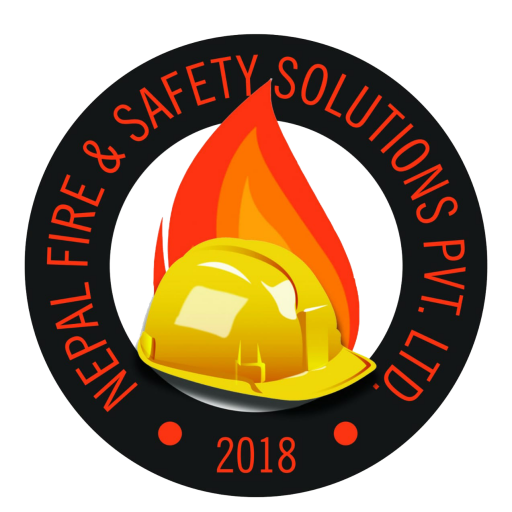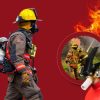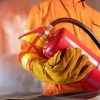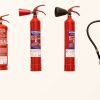The Importance of Using Genuine Spare Parts in Fire Safety Equipment
Introduction
From the narrow alleyways of Kathmandu’s historic Durbar Square to the rapidly developing tech parks of Lalitpur, fire hazards in Nepal can emerge without warning—whether due to aging electrical wiring in hilly settlements or high-risk storage in industrial zones of Biratnagar. At the core of every fire extinguisher, alarm panel, and sprinkler head lies a network of critical components. While the temptation to cut procurement costs by sourcing cheaper, unbranded parts exists, the stakes in fire safety are simply too high. This article delves into why using genuine spare parts in fire safety equipment across Nepal is not just best practice—it’s a lifesaving imperative.
1. Understanding “Genuine” vs. “Counterfeit” Parts
- Genuine spare parts are produced or licensed by the original equipment manufacturer (OEM) and conform to specifications set out by the Nepal Bureau of Standards & Metrology (NBSM), the country’s official standards body (nbsm.gov.np, Wikipedia).
- Counterfeit or substandard parts are manufactured without OEM oversight, often utilize inferior materials, lack traceable batch records, and bypass essential quality-control tests—compromising performance when every second counts.
2. Performance & Reliability: Why Every Component Matters
- Operational Demands: Juddha Barun Yantra, Kathmandu’s oldest fire brigade, responds to around 600 fire calls annually—each requiring flawlessly functioning hoses, nozzles, and pressure gauges to contain outbreaks rapidly (Wikipedia).
- User Preparedness: A 2017 study of commercial buildings in the Kathmandu Valley revealed that occupants often struggle to operate fire safety equipment under stress—making reliable, intuitive parts essential for quick action (ResearchGate).
- Extreme Conditions: Nepal’s varied climate—from monsoon humidity in Terai to sub-freezing winters in the high hills—demands fire seals, O-rings, and sensor housings made from materials rated for wide temperature ranges and high corrosion resistance.
3. Compliance with Regulatory Standards
- Nepal National Building Code (NBC 107: Provisional Recommendation on Fire Safety): Updated most recently in September 2022, this module specifies minimum fire-safety requirements for ordinary buildings, including the design, installation, and maintenance of detection and suppression systems (Download).
- Nepal Bureau of Standards & Metrology (NBSM): Established in 1976, NBSM issues Nepal Standards (NS) Marks to certify products meeting ISO-aligned testing protocols—ensuring genuine parts deliver predictable performance (nbsm.gov.np, Wikipedia).
- Insurance & Statutory Inspections: Leading Nepali insurers typically require proof of certified fire safety components before issuing or renewing fire-risk coverage, and municipal fire authorities often demand batch-wise traceability during annual audits.
4. The True Cost of “Cheap” Parts
While counterfeit parts may promise 20–30% savings, the hidden expenses can far exceed any upfront gain:
| Hidden Cost Category | Potential Impact in Nepal |
|---|---|
| Operational Downtime | Factory shutdowns or business interruptions in Pokhara could cost lakhs per day in lost revenue. |
| Repair & Replacement | Frequent failures drive recurring service charges, often at premium emergency rates. |
| Insurance Penalties | Claim rejections or surcharges if equipment malfunctions are traced to uncertified parts. |
| Reputational Risk | News of a preventable blaze—say in a heritage site of Patan—can erode public trust and stall future investments. |
5. Warranty, Support & Lifecycle Management
- OEM Warranties cover defects in materials and workmanship, offer guaranteed performance under specified conditions, and often include technical hotline support for Nepali installers.
- Obsolescence Planning: Genuine parts are backed by OEM obsolescence-management programs, ensuring replacements remain available—even as systems age over decades. Once a counterfeit supplier exits the market, users are left with unsupported, failing equipment.
6. How to Verify Genuine Spare Parts
- Purchase from Authorised Distributors
Confirm dealers listed on the OEM’s Nepal website or NBSM-accredited partner list. - Check Packaging & Labels
Look for the NS Mark, ISO references, holographic seals, and batch numbers that you can cross-verify with the OEM. - Demand Documentation
Request a Certificate of Conformity and factory test reports (e.g., hydrostatic tests for cylinders, calibration certificates for gauges). - Use Digital Authentication
Scan QR codes or RFID tags—many OEMs now provide secure online portals to confirm part authenticity.
7. Building a Culture of Safety
- Training & Drills: Equip facility staff—from Pokhara hotels to Biratnagar factories—with hands-on sessions on authentic equipment operation.
- Audit Integration: Include spare-parts authentication in routine fire-safety audits and maintenance checklists.
- Supplier Evaluation: Score vendors on certification credentials, traceability, after-sales support, and local spare-parts availability—not just price.
Conclusion
In Nepal’s challenging terrain and diverse climatic zones, every component in a fire safety system must function perfectly when duty calls. Genuine spare parts—certified by NBSM, compliant with NBC 107, and supported by OEM warranties—are the bedrock of reliable protection. While counterfeit alternatives may seem budget-friendly at first glance, the long-term risks to life, property, and reputation are simply too great. Prioritise authenticity in your fire-safety procurement today—and ensure that when flames threaten, your equipment is ready to perform without compromise.







3 thoughts on “The Importance of Using Genuine Spare Parts in Fire Safety Equipment”
Lorem ipsum dolor sit amet, consectetur adipiscing elit, sed do eiusmod tempor incididunt ut labore et dolore magna aliqua. Quis ipsum suspendisse ultrices gravida. Risus commodo viverra maecenas accumsan lacus vel facilisis.
Lorem ipsum dolor sit amet, consectetur adipiscing elit, sed do eiusmod tempor incididunt ut labore et dolore magna aliqua. Quis ipsum suspendisse ultrices gravida. Risus commodo viverra maecenas accumsan lacus vel facilisis.
Lorem ipsum dolor sit amet, consectetur adipiscing elit, sed do eiusmod tempor incididunt ut labore et dolore magna aliqua. Quis ipsum suspendisse ultrices gravida. Risus commodo viverra maecenas accumsan lacus vel facilisis.
You must be logged in to post a comment.